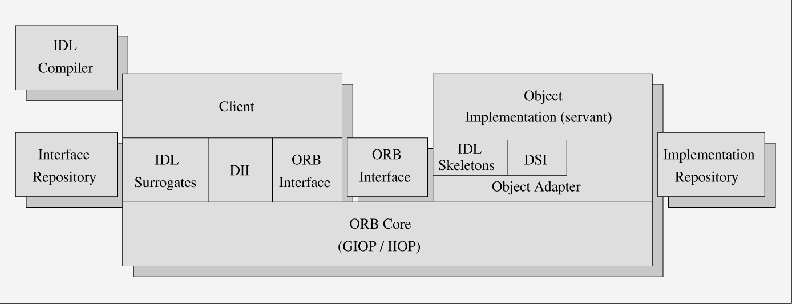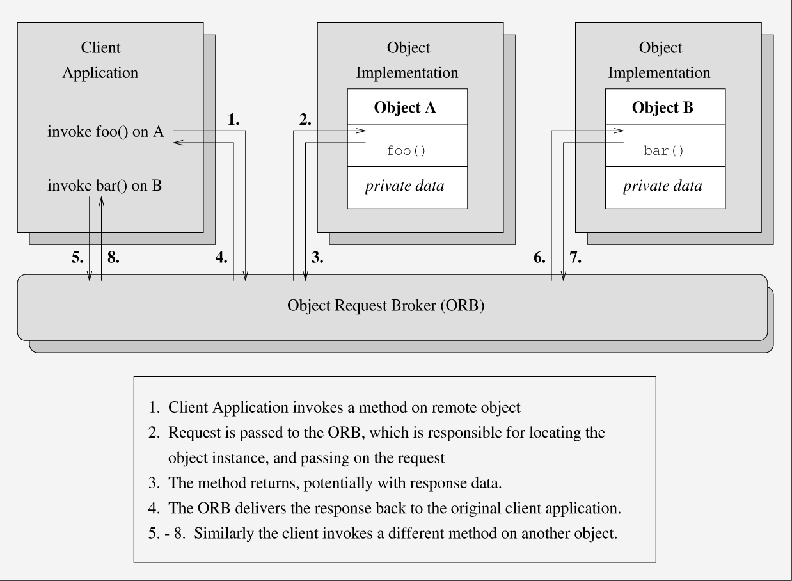An Object-Oriented Approach
A D V E R T I S E M E N T
CORBAservices provide the basic
functionality for the management of objects during their lifetime�for example,
this includes:
- Naming (uniquely specifying a particular object instance)
- Security (providing auditing, authentication, etc.)
- Persistence (allowing object instances to be �flattened� to or
created from a sequence of bytes)
- Trading (providing objects and ORBs a mechanism to �advertise�
particular functionality)
- Events (allows an object to dynamically register or unregister an
interest in a particular type of event, essentially decoupling the
communication from the object)
- Life-cycle (allows objects to be created, copied, moved, deleted)
Common Facilities provide the
frameworks necessary for application development using distributed objects.
These frameworks are classified into two distinct groups: horizontal facilities
(commonly used in all applications, such as user-interface management,
information management, task management and system management), and vertical
facilities (related more to a particular industry, for example
telecommunications or health care).
The CORBA standard specifies an entity called the Object Request Broker
(ORB), which is the �glue� that binds objects together to enable higher-level
distributed collaboration. It enables the exchange of CORBA requests between
local and remote objects. Figure 3 shows the architecture of CORBA. Figure 4
shows the invocation of methods on different remote objects via the ORB.
Figure 3. Common Object Request Broker Architecture
(CORBA)

Figure 4. Calling a method within a specific object
instance

|
